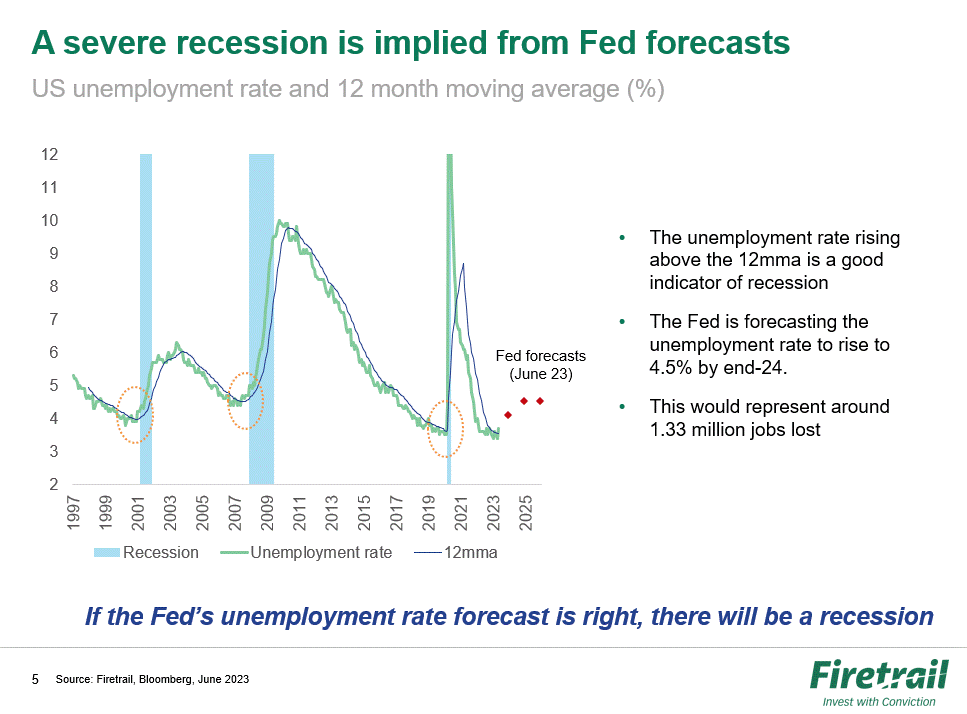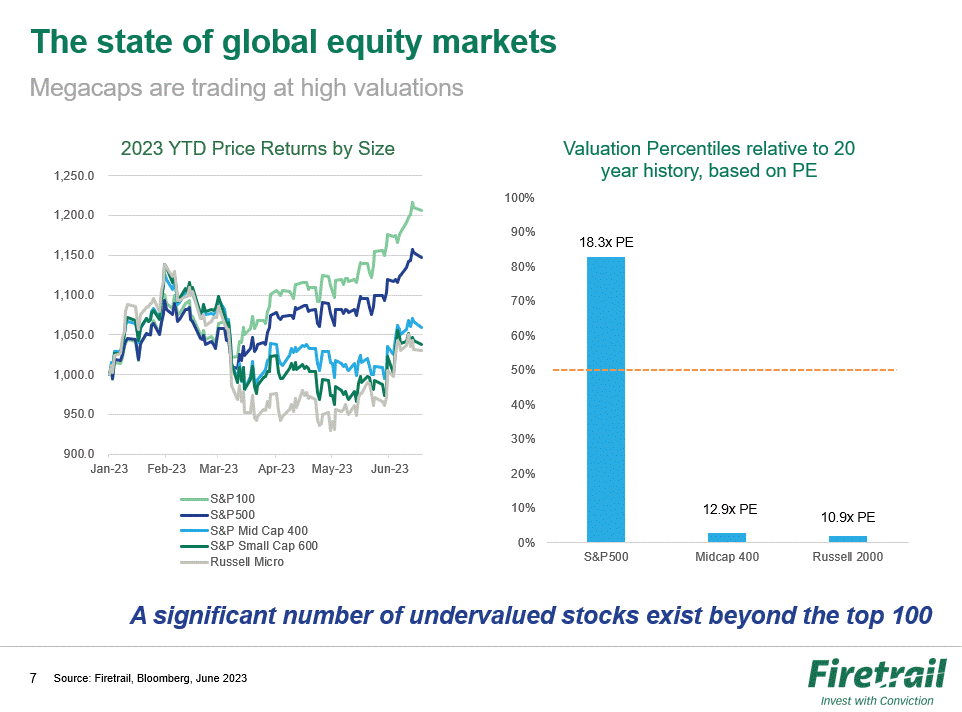Is the US recession finally here?

Firetrail Investments
Unemployment rates are not only crucial economic indicators but can also provide valuable insights into the overall health and stability of an economy. In this wire, I explore the relationship between rising unemployment rates and the possibility of a recession. I will also delve into the Federal Reserve's forecasts, which predict an increase in the unemployment rate by the end of 2023 and beyond, resulting in a significant number of job losses.
The Unemployment Rate as a Recession Indicator
Historically, a rise in the unemployment rate above its 12-month moving average has often been viewed as a reliable indicator of an impending recession. When more individuals are unemployed, it indicates a slowdown in economic activity, as businesses may be reducing their workforce due to declining demand or economic uncertainty. Monitoring this indicator can provide valuable insights into the state of the economy and its potential future trajectory.
After bumping along most of 2023 between 3.4 and 3.5%, the US unemployment rate rose to 3.7% in May. Importantly, the unemployment rate rose above its 12-month moving average, which has historically been an accurate predictor of a US recession.
While one data point doesn't make a trend, it is an indicator worth watching. The next US unemployment rate release date is July 7, 2023.

The Federal Reserve plays a pivotal role in assessing and managing the economic landscape. According to their forecasts, the unemployment rate is expected to rise to 4.5% by the end of 2024. Historically, anytime the unemployment rate has risen by 0.5% from its business cycle low, there has been a recession. Furthermore, if this forecast holds true, it implies the loss of approximately 1.33 million jobs, giving faith to those who anticipate a swift Fed pivot in the eye of a labour market downturn.
A great environment for long-term equity investors
If I imagine myself in our clients' position and take on the role of asset allocator, it looks like the risk-reward balance for equities is not particularly compelling when compared to other asset classes. This is especially the case when considering market-capitalisation based indices. This is a short-term view.
Firetrail are global equity investors who prioritise sustainable business models, sustainable earnings, and valuation opportunities, there are fantastic opportunities available for stockpickers in the current environment who are willing to take a longer-term view.
For example, the US Midcap 400 and Russell 2000 are currently trading at 20-year valuation percentile lows, based on PE. These parts of the equity market already reflect recessionary conditions which is to be expected from forward-looking investors.

The current market environment has provided the Firetrail investment team with the opportunity to build a well-balanced portfolio of 33 global companies that are future and current leaders in positive change.
The Firetrail S3 Global Opportunities Fund (Managed Fund)(ASX: S3GO) is highly active (92% active share), represents better value (13.4x P/E 3yr versus 13.9x for MSCI World), and stronger growth (14.9% EPS growth 3yr forward and 19.3% return on equity versus 6.8% and 16.7% for MSCI World respectively)*.
It is true that market conditions are tougher. But the stock market is not the economy. Now is the time to embrace the opportunity to participate in the growth of great companies and let your investments flourish over time.
*as at May 2023
